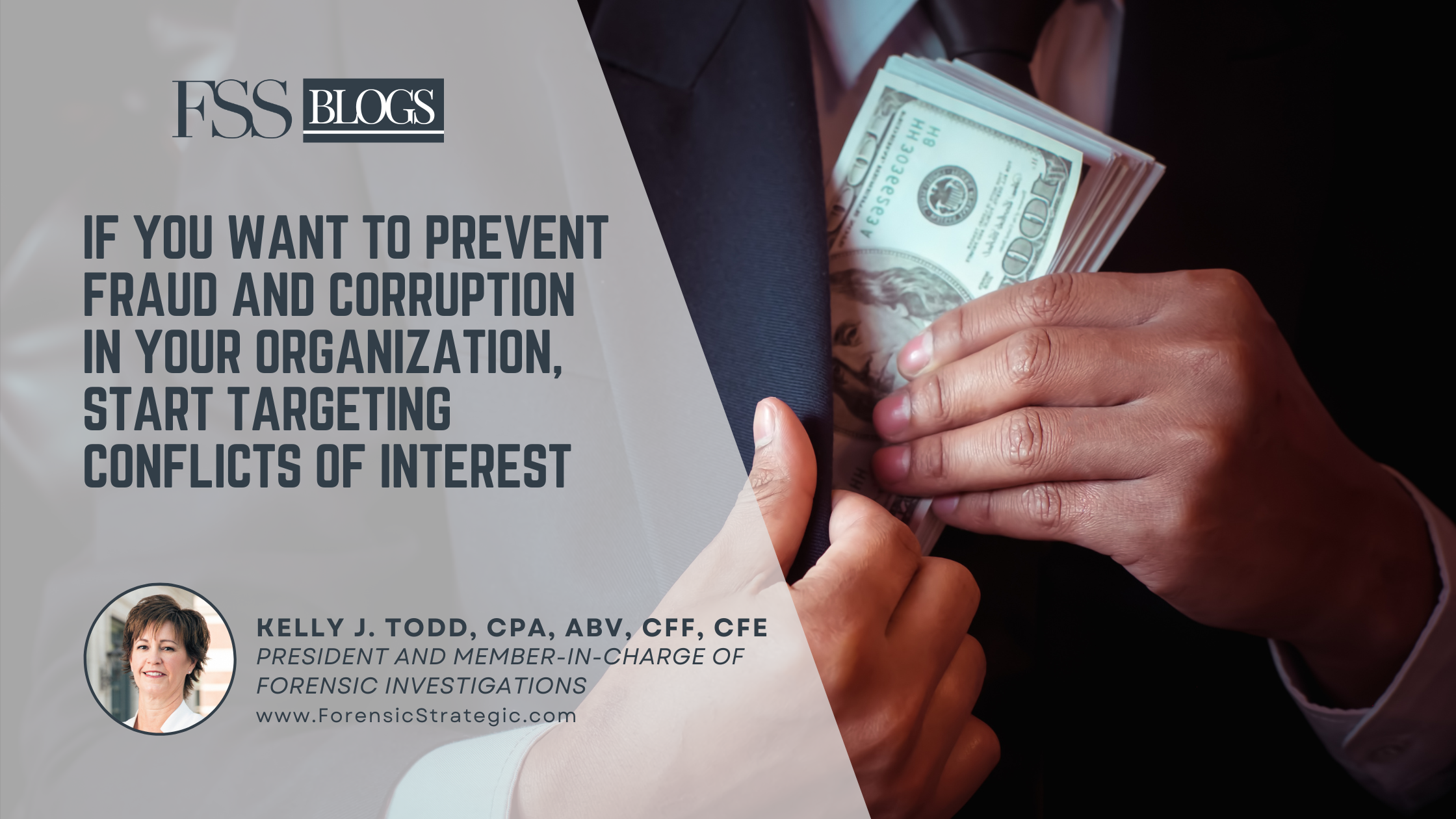A conflict of interest is not unlike the common cold. It may be a minor annoyance that resolves itself after a little discomfort. Or, if left untreated, the conflict can develop into something far worse—corruption—and prove damaging and even fatal for your organization.
Understanding how conflicts of interest and corruption are related can help management teams prevent and detect fraud and misconduct by employees. If conflicts of interest are monitored and controlled, corruption risk declines.
Let’s first define what we mean by a conflict of interest and corruption. Conflicts of interest occur when an individual has an actual or perceived opportunity to exploit their role in an organization for personal or corporate gain. Taking advantage of a conflict of interest and actually abusing a position for private gain is corruption.
While corruption almost always requires a conflict of interest, a conflict does not always lead to corruption. This leaves organizations with room to prevent corruption from taking hold—provided they take steps to identify and address actual or perceived conflicts.
The Cost of Corruption
Conflicts are most often associated with the procurement process, though any position that awards business or controls payments can be abused. Employees may be conflicted if they have personal relationships (family, romantic or otherwise) with a third-party doing business with their employer. They may have a conflict involving trade secrets if they leverage their knowledge of confidential information on behalf of another business. Or they may have a financial conflict—for example, a procurement employee who receives kickbacks from a supplier.
When conflicts lead to corruption, the results can be extraordinarily costly for an organization. Consider a recent case involving agribusiness giant Cargill. The company discovered that during a seven-year period, key employees involved in the procurement process had accepted more than $1 million in cash, gifts and vacations from a contractor. The kickbacks included lavish trips to the Caribbean, rides on a private jet, and luxury yacht rentals from a contractor. According to news reports, an employee was even added to the will of one of the contractor’s top executives.
In exchange, the employees opened the candy store, agreeing, according to the Department of Justice, to put the interests of the contractor ahead of those of their employer. This included helping conceal the fact that the contractor was overcharging Cargill millions of dollars for its goods and services.
The employees and the contractors then conspired to conceal the scheme by giving fraudulent pricing data to Cargill’s auditors, according to news reports. When the company became suspicious that something was amiss, the employees denied they had received any kickbacks or special treatment from the contractor and then helped the contractor as it faked invoices to cover its tracks.
Cargill calculated the loss at just under $45 million. Two Cargill employees were fired, ordered to pay restitution and sent to prison, as were two executives from the contractor. Meanwhile, Cargill has been left battling its insurer in court to cover the costs of the fraud.
Preventing Corruption in Your Organization
While the Cargill case may be an extreme example, it should serve as a warning for employers to be aware of the dangers of employee conflicts and to take preventative steps to help stop those conflicts from escalating into corruption. Among the steps organizations should consider:
• Create a clear ethics policy. As part of the employee handbook, the company should make clear what constitutes a conflict, how it should be reported, and the consequences employees may face for failing to disclose.
• Train employees on how to avoid conflicts. Employees may not understand how conflicts can morph into corruption. A training program can emphasize the pitfalls of conflicts of interest and help employees to avoid them.
• Encourage a pro-disclosure work environment. To create a corruption-free organization, managers should help staff feel comfortable revealing any actual or perceived conflicts, and employees should be able to report conflicts in writing on an annual basis.
• Build strong controls to prevent corruption. Organizations without strong controls over their financial and purchasing processes are particularly susceptible to corruption. For example, critical financial and procurement tasks should not flow through one person. Duties should be divvied among employees and then reviewed closely to help deter fraud.
• Educate managers on how to handle conflicts issues. Managers should know how to identify and deal with conflicts of interest and should be working from a clearly defined set of company procedures.
Actions to Take When Conflicts Occur
If an actual conflict of interest develops, management can take one of several actions depending upon the nature of the conflict. They can:
• reassign the conflicted employee to another work project.
• restrict job-relevant conflicting interests.
• remove the employee from conflicted decision-making responsibilities.
• ask the employee to resign from the position or terminate the employee if they have a business relationship with a third party.
Before they act, however, managers should have a clear understanding of what constitutes a conflict of interest and how they should respond if one occurs. Managers armed with this knowledge can help keep the organization healthy and substantially reduce the risk of a conflict mutating into corruption.
About FSS
Forensic Strategic Solutions has substantial experience working with employers to investigate and prevent fraud. To learn more about our work, contact us for a consultation, or visit our practice area page on Financial Fraud Investigations.

